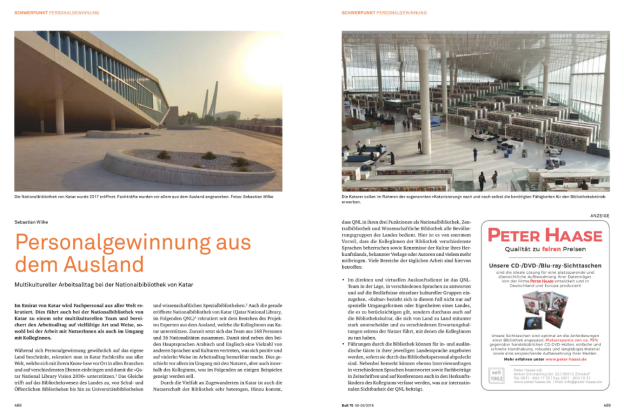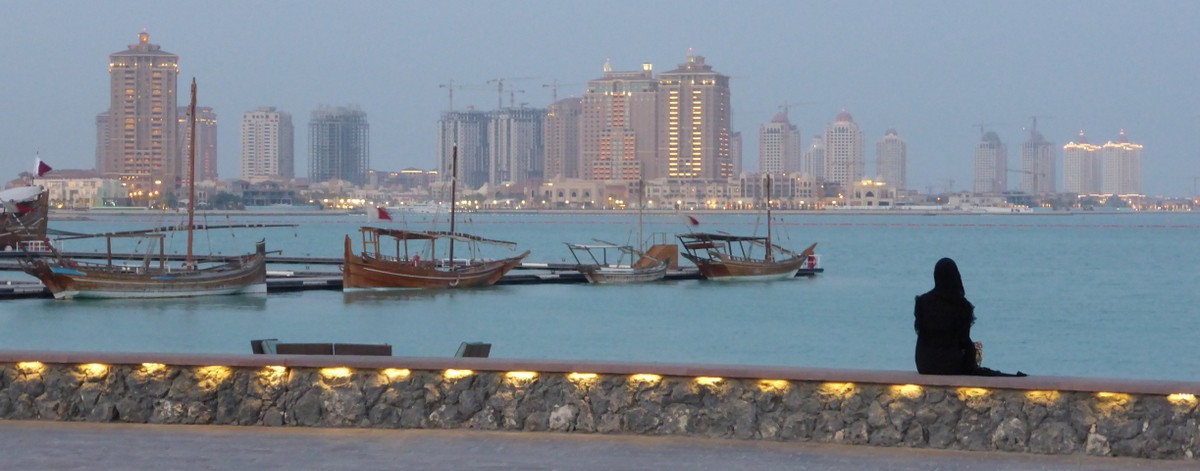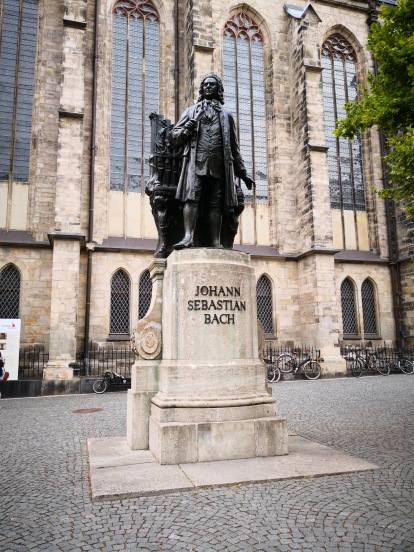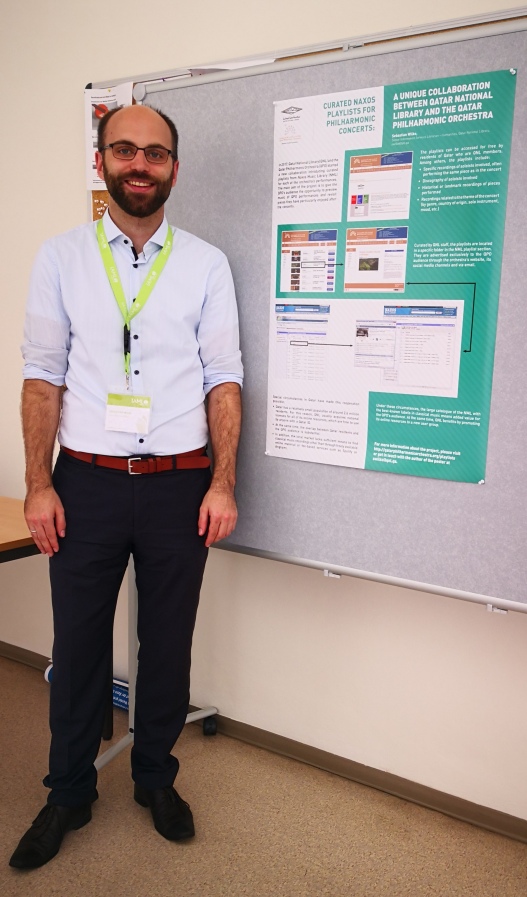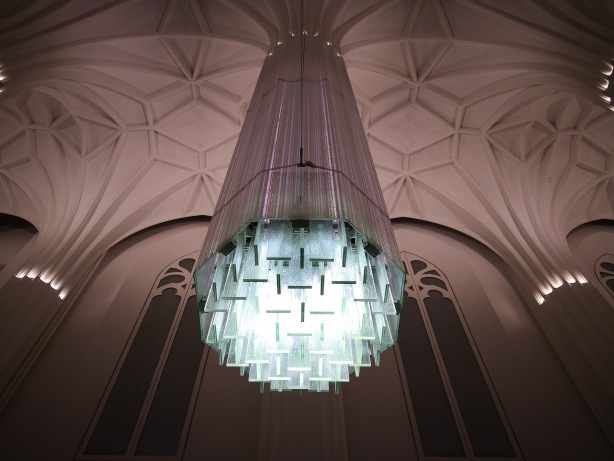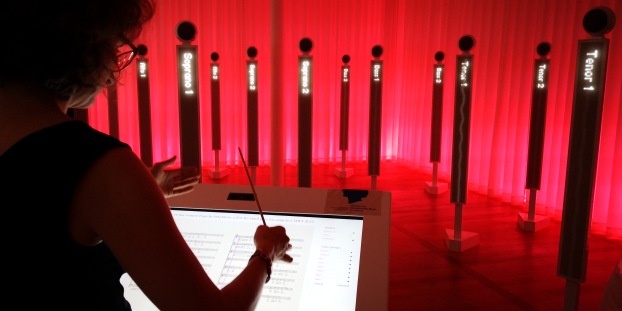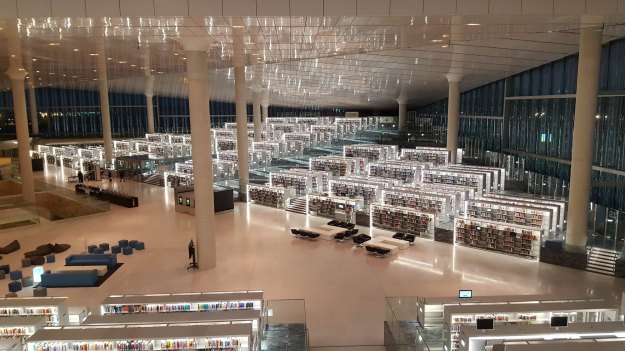Two weeks ago, I had the opportunity to attend the Academic Research Conference 2014 at the Qatar National Convention Center. Hosted by Qatar Foundation, the conference is considered “a unique platform to activate multidisciplinary knowledge sharing and collaboration needed to tackle the most pressing national challenges in research, as well as bolster Qatar’s research and development sector”. And indeed, visiting several sessions in the Social Sciences stream throughout the conference, I gained interesting insights into current issues in Qatari society I would normally not get to talk about with colleagues or people in the public. Among others, this included challenges within the educational system, the engagement of GCC nationals and expats at their workplace, Qatari marriage practices and miscarriage among Qatari women. I thought to share these with you as the most interesting talks I heard along with a selection of posters from the poster sessoin. Living in Doha for almost a year, I am still learning a lot about local culture. The two days at ARC definitely added some valuable perspectives to this process.
Day 1 | 11:00 – 12:15 Four Parallel Invited Presentation Sessions | Social Sciences

Among the three presentations, the one entitled “Youth aspiration and motivation in Qatar: Evidence from education surveys“ was the most interesting one for me. Dr. Darwish Al-Emadi from the Social and Economic Research Institute at Qatar University presented the findings of a survey conducted at independent schools with students, parents and school admins. The results revealed a chronic motivation problem among students in both their preparatory and secondary phase. Students generally felt that Math, Science, Arabic and English classes are important for their future, although they provided a more diverse feedback about this at the end of their school life. Asked about planned occupations in the future, major groups were indicating the business and military sector, whereas very few chose healthcare, education, arts and other areas. In addition, many students don’t see their future career in the knowledge society, which, according to the presenter, should be considered very problematic for achieving Qatar’s national vision. Overall, Al-Emadi was concerned and skeptical about the future of the educational system in Qatar in its current state. Unfortunately though, he did only describe the status quo and did not provide any suggestions for solutions to tackle the problems addressed.
Overall, Al-Emadi was concerned and skeptical about the future of the educational system in Qatar in its current state. Unfortunately though, he did only describe the status quo and did not provide any suggestions for solutions to tackle the problems addressed.
Day 1 | 15:15 – 17:00 Four Parallel Abstract Presentation Sessions | Social Sciences
In her presentation “Motherhood Lost: Women, miscarriage, and birds in heaven in Qatar”, Susie Kilshaw from the University College London provided some fascinating insights into the situation of Qatari women who experience a miscarriage. The larger project had been conducted with both Qatari and UK women, while following a mix of anthropological and medical approaches to provide a broader context. As for Qatar, according to Kilshaw, procreation is considered to be one the most important pillars of society. The total fertility rate of Qatari women is one of the highest in the Arab Gulf States, with an average age of 23 years of Qatari women at their first marriage. The following statement by one of the participants in the study shows the ongoing stigmatization that Qatari women often have to face when experiencing a miscarriage: “Yes, of course! …they look at her as if she has something missing …I don’t know how to explain this but they look at her as if she has a problem of a defect that prevents her from getting pregnant or as if she has been cursed by an evil eye (so is it her fault?) sort of because the normal thing is that the woman gets pregnant and then has her baby.” The second part of the presentation focused on another phenomenon referred to as “birds in heaven”. Interestingly, the researchers came along this metaphor of hope several times when talking to Qatari women as well as their physicians:

Mohanalakshmi Rajakumar from Northwestern University Qatar, author of a number of novels related to the region and editor of several essay anthologies such as Qatari Voices, presented findings of a study dedicated to Qatari marriage practices (Contemporary Qatari Marriage Practices: Education And Marriageability For Modern Qatari Women). Using both qualitative and quantitative research approaches, the study examined the potential impact of the level of Qatari women’s education on their plans for marriage. An online survey had been conducted among 355 female Qatari participants that included participants aged 18 to 25+ at Qatar University, Qatar Foundation branch campuses and the Community College Doha. In addition, the researchers had the possibility to facilitate focus groups as well as individual interviews and to examine 50 marriage contracts. Overall, the findings suggest a broad variation among women within Qatari society when it comes to their choices of marriage and education. Young Qatari women are expected to be educated and married, but, at the same time, the age of marriage among Qatari women is clearly rising over the past three generations. Enriched with several interesting anecdotes, the presentation also highlighted some statements of participants to illustrate the results.

Rajakumar concluded that marriage in Qatar and the perceptions among men and women is a very complex research topic. The study can only be seen as a starting point, as there are still many potential areas for future research such as the view of Qatari men on marriage.
Day 2 | 11:30 – 13:30 Four Parallel Abstract Presentation Sessions | Social Sciences
David Barrie Jones from The Talent Enterprise in the UAE presented findings from a longterm study on engagement and productivity of GCC national and expats at their workplace (Engagement and Productivity: What are the Key Drivers for GCC Nationals and Expatriates? Findings & Implications The Largest GCC Workplace Study Ever Conducted – A Longitudinal Study 2010 – 2012). While the concept of ‘engagement’ remained a bit vague, the results showed some interesting tendencies:
- Whilst Qatari nationals were the most engaged, GCC nationals are consistency and significantly less engaged than their expatriate counter-parts in their home countries.
- The younger generation of nationals is significantly less engaged with their work than the older generation.
- There has been a statistically significant decline in youth engagement (age under 25) from 2010 to 2012.
- Surprisingly, amongst all age groups, those under the age of 25 and especially those in the 25 to 34 year age groups report the lowest level of acceptance with diversity in the workplace.
- Those workers under the age of 34 are experiencing an “early mid-career crisis” compared with their peers elsewhere in the world.
- Average levels of employee engagement are higher in the private sector, rather than in the public sector.
- GCC nationals report better relationships with their managers in the private sector, greater development opportunities and a more dynamic workplace.
- GCC national women are significantly more comfortable than their male counterparts in a diverse working environment.
One slide that resonated with me in particular, was showing the ten top and bottom strengths of GCC Youth. Among the bottom strengths, flexibility, curiosity and empathy ranked very high. Much as the findings in the talk about challenges in the educational system above, this must be seen as a warning sign for the development of human capacity in the region in upcoming years. Thus, Jones concluded with a call for action to tackle this and other challenges:
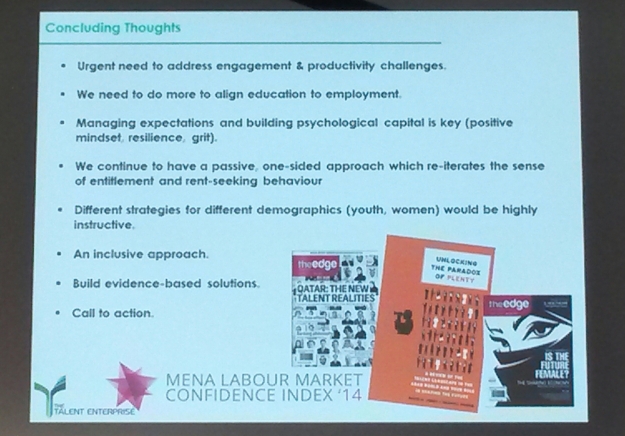
(–> further readings as suggested on the slide above: The Edge – Is the future female? | The Edge – Qatar: The new talent realities | Unlocking the paradox of plenty – A review of the talent landscape in the Arab world and your role in shaping the future)
Poster Session
Apart from the paper presentations, the poster session featured a number of interesting projects, for me, again, mostly in the Social Sciences section. Below is a selection of posters that caught my attention:
Social Media as a Source of Unbiased News
Borrowed Words in Qatari Dialect
Preserving and Improving Traditional Built Environments in Doha: The case of Old-Mushaireb area
Politicization of migrants as seen on Twitter
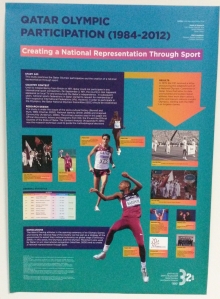 Mathaf Encyclopedia of Modern Art and the Arab World (website of encyclopedia)
Mathaf Encyclopedia of Modern Art and the Arab World (website of encyclopedia)
Digitizing and Indexing Arabic Historical Manuscripts in Qatar
A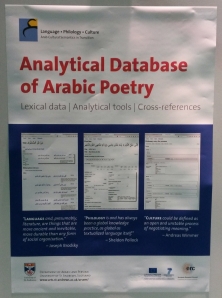 nalytical Database of Arabic Poetry
nalytical Database of Arabic Poetry
Qatar Olympic Participation (1984-2012) – Creating a national representation through sport
Building Tools for Dietary Health Monitoring: Studying Food Consumption Through Twitter
Beliefs about Jinn, Black Magic & Evil Eye among Muslim Nursing Students at University of Calgary in Qatar (UCQ)
